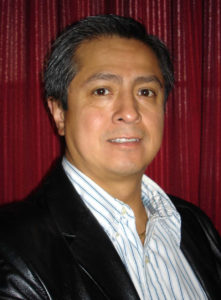Frank Chagoya
A natural born helper, Chagoya works tirelessly to improve the end-user experience at Leo Burnett.
What companies/organizations have you worked for as a DAM professional? What was your role at each?
I have worked at Leo Burnett for ten years developing, integrating, launching and maintaining DAMs for a number of our clients. Prior to that I worked at Seven Worldwide, where I managed assets outside of a DAM, maintained databases for assets and fulfilled orders to Latin American markets.
How do you describe digital asset management to others?
I usually describe DAM as a repository for approved final assets, such as our ads or creative artwork, with a secure means to deliver these assets to global markets for repurposing.
How did you learn DAM? Any recommended sources?
I learned about DAM the hard way, by performing DAM functions outside of a DAM. I also learned by attending seminars, and webinars, reading literature and networking with DAM representatives and users. Today, you can Google Digital Asset Management and find a plethora of information, websites and networking opportunities.
What’s the most important thing for someone new to DAM to understand about DAM?
DAM is here to stay and evolve, and it is doing so swiftly! DAM has been around digitally for well over a decade and has made some remarkable advances in recent years. It is also expanding across a diverse marketplace. Today it is even more important to push for DAM applications that work better for you and your business needs, such as improved searching, metadata application, delivery applications and reporting.
If you weren’t doing DAM as a career, what would you be doing?
If I had to do it all over again I would probably choose a career it the field of medicine. I enjoy helping people and making a difference in the things I get involved with. That I why I participate in venues like the DAM Guru Program when ever I can.
What is your ongoing greatest challenge with DAM?
Making sure we know enough about the current and prospective end user base, and how we can make DAM more adaptable to them. DAMs are developed to improve workflows, which in turn can lead to a wide variety of end users. This is where change management comes into play as your user base grows so does your need for DAM evolution.
What is your vision for DAM? What will it look like in 5 years?
I feel DAMs will have to evolve further into providing more service in the business arena. For instance, providing digital dashboard applications that can be used by upper management to monitor DAM activities and, efficiencies, as well as other metrics.
What was your biggest mistake with regard to DAM?
In our first DAM development we did not get enough diversity in the end user base to learn how to make the system more effective. However, after our launch we started getting feed back which lead to changes that helped make the DAM more user friendly.
What was your biggest success with regard to DAM?
We experience our biggest success when we launch a DAM for our clients. To have the client realize the value it brings to business, profitability, efficiency, end user adoption and overall workflow gives us a tremendous sense of pride.
What more would you like to learn about DAM?
I think that more and more businesses are pushing for new developments for DAM. Some of these customizations will be hitting the industry mainstream soon. I would like to keep in tune with our industry’s heartbeat and stay on top of these leading-edge applications for DAM. There are a number of websites and blogs that are dedicated to bringing to light these evolving DAM solutions. These venues are making it easier for people like us to be in the know and also to become more interactive with our growing community.
This interview originally appeared on DAM Guru on Mon, 23 Dec 2013. For more DAM News interviews, see the interviews index page.
Share this Article:

